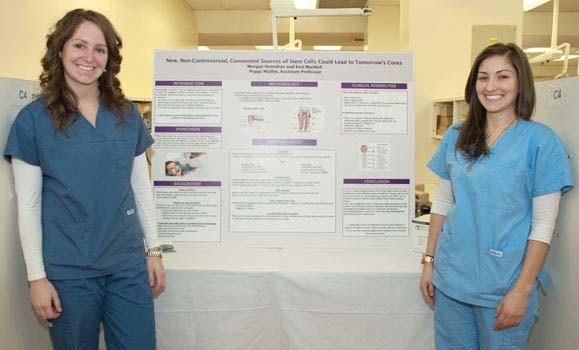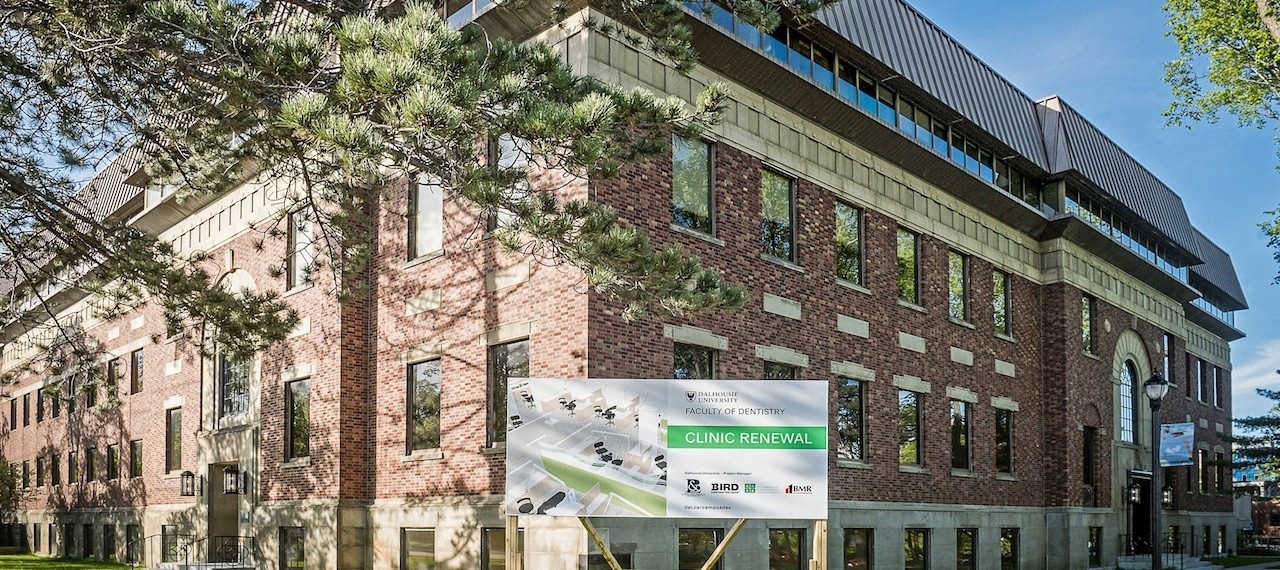News
» Go to news main2013 Student Table Clinics

On Friday, February 8th, buzzes of excitement were coming from the second floor Clinic of the Dalhousie University Dentistry Building. It was the roar of energetic students sharing their research assignments at the annual Student Table Clinic Night.
Table clinics are a tabletop demonstration combined with a brief oral presentation in which students present on a topic that they have extensively researched. The students are paired with a faculty advisor and are given the opportunity to choose a topic of their interest. The topic must be in areas that are being developed through research, are new, or are controversial. The topic also must be of Continuing Education interest to clinicians.
As part of the course curriculum, students are required to present their research topics on Student Table Clinic Night. The event welcomes dental care providers as well as members of the university community. There are also dental care providers who volunteer their time and act as judges for the projects, helping to determine the winners at the end of the evening.
“Table Clinics is a great event to showcase all the hard work and efforts the students have put in,” says Prof. Peggy Maillet, event coordinator and Assistant Professor in the School of Dental Hygiene. “It is wonderful to see the students demonstrating such passion for their topics, and to be able to learn a few new things myself!”
This year the big winners were third-year dentistry student Kate Broderson (“Implant Abutment Selection: Which Abutment to Choose?), and second-year dental hygiene students Morgan Hanrahan and Keri MacNeil (“New, Non-Controversial, Convenient Sources of Stem Cells could lead to Tomorrow’s Cures”).
Recent News
- Strategic Plan: 2021‑2026: Progress so far
- The 2025 Faculty of Dentistry Impact Award goes to Tarik Abdulkarim
- Dr. Leigha Rock takes on the presidency of the CADR
- Malek Mahmoud ‑ A vision and a plan
- The 2024 QEII Foundation Diversity in Health Care Bursaries: Feeling seen and included
- Celebrating African Heritage Month with an award
- New Bachelor of Dental Hygiene degree programs to start in 2025‑26
- Announcing a new path for licensure in Canada for internationally‑trained dentists
